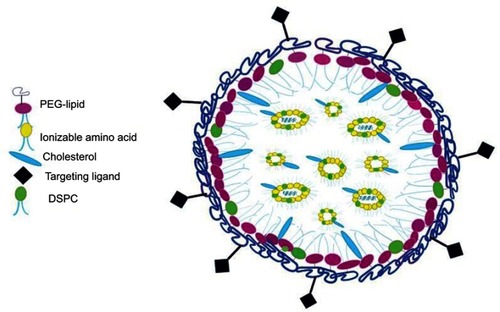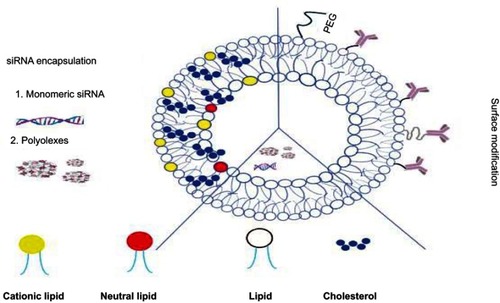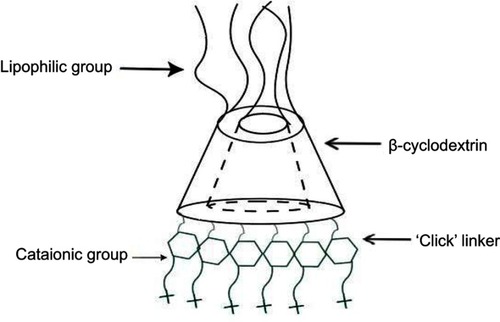Figures & data
Figure 1 Mechanism of action of siRNA molecules. SiRNA duplexes are incorporated in the RNA-induced silencing complex (RISC). Then, siRNA are unwinded and the strand with lower thermodynamic stability at its 5’end remains in the complex and guides it to the complementary mRNA. The target mRNA is then cleaved and protein expression is abolished or reduced.
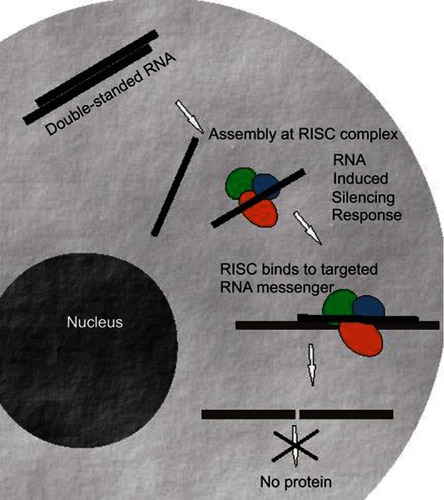
Table 1 Summary of siRNA-loaded encapsulated liposomes utilized for siRNA delivery
Figure 5 A schematic representation of a dendrimer showing the central core, the peripherical sites, and the consecutive generations.
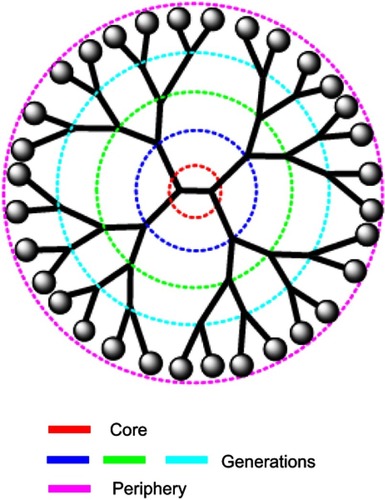
Table 2 Intracellular and extracellular limitations of RNAi
Table 3 Selection of clinical trials against cancer using siRNA drugs

